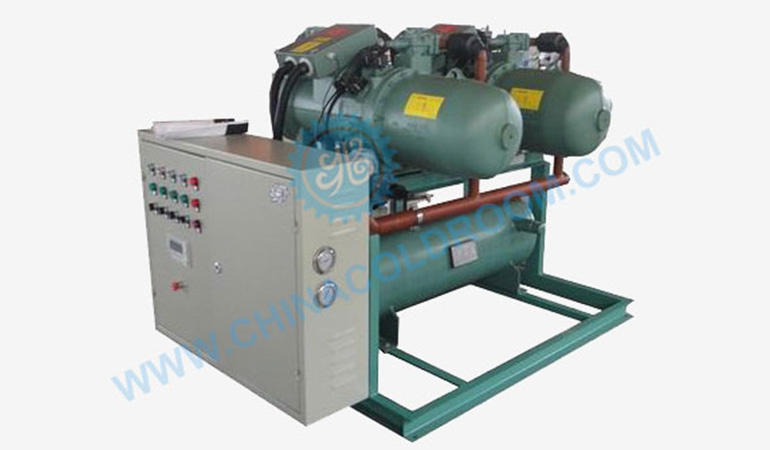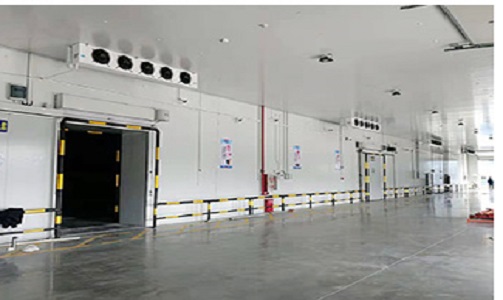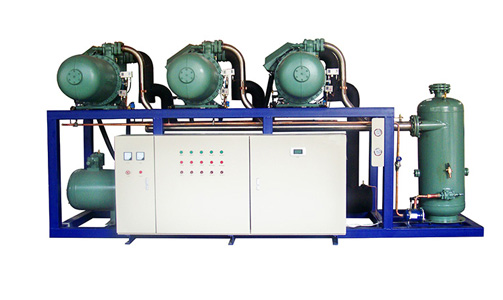Choosing the right condensing unit is crucial for the efficient operation of your refrigeration or HVAC system. A condensing unit plays a vital role in the heat exchange process, ensuring that the system operates at optimal performance levels. Whether you’re setting up a new refrigeration system or upgrading an existing one, selecting the appropriate condensing unit can significantly impact energy efficiency, operational costs, and overall system reliability. This guide provides key considerations to help you make an informed decision when choosing your condensing unit.
1. Understand Your Cooling Requirements
Determine the Cooling Load: The first step in selecting a condensing unit is to determine the cooling load of your system. The cooling load depends on factors such as the size of the area to be cooled, the type of goods being stored, and the desired temperature. Accurately calculating the cooling load ensures that you choose a condensing unit with the right capacity to meet your needs. An undersized unit may struggle to maintain the desired temperature, while an oversized unit can lead to unnecessary energy consumption and higher operating costs.
Consider the Application: Different applications have varying cooling requirements. For example, commercial refrigeration systems, cold storage rooms, and air conditioning systems may require different types of condensing units. Understanding the specific needs of your application helps you select a unit that provides the right balance of cooling capacity, efficiency, and reliability. Additionally, consider whether the system will operate continuously or intermittently, as this can affect the type of condensing unit needed.

Bitzer Water-Cooled Low Temperature Piston Condensing Unit (-20~-15℃)
2. Choose the Right Compressor Type
Types of Compressors: The compressor is a critical component of the condensing unit, responsible for compressing the refrigerant and facilitating heat exchange. Common types of compressors used in condensing units include reciprocating, scroll, and screw compressors. Each type has its advantages and is suited for different applications:
Reciprocating Compressors: Known for their reliability and efficiency, reciprocating compressors are ideal for small to medium-sized refrigeration systems.
Scroll Compressors: Scroll compressors are highly efficient and provide smooth operation, making them suitable for commercial refrigeration and air conditioning applications.
Screw Compressors: Screw compressors are designed for large-scale industrial refrigeration systems and offer high capacity and efficiency.
Match Compressor Capacity: The capacity of the compressor should match the cooling load requirements of your system. An appropriately sized compressor ensures efficient operation and prevents issues such as frequent cycling, excessive wear, and energy wastage. Consult the manufacturer's specifications to select a condensing unit with a compressor that meets your system's demands.
3. Consider Energy Efficiency
Look for Energy-Efficient Models: Energy efficiency is a crucial factor when choosing a condensing unit, as it directly impacts operational costs and environmental sustainability. Energy-efficient condensing units consume less electricity, reducing utility bills and minimizing the carbon footprint of your refrigeration or HVAC system. Look for units with high Energy Efficiency Ratio (EER) or Seasonal Energy Efficiency Ratio (SEER) ratings, as these indicate better performance and lower energy consumption.
Choose the Right Refrigerant: The choice of refrigerant used in the condensing unit can affect its efficiency and environmental impact. Opt for units that use environmentally friendly refrigerants, such as R-410A, R-134a, or R-32, which have lower Global Warming Potential (GWP) and ozone depletion potential. Additionally, consider refrigerants that offer high thermodynamic efficiency, as this can improve the overall performance of the condensing unit.

GEA BOCK Low Temperature Water Cooled Condensing Unit (-35~-25℃)
4. Assess the Installation Environment
Indoor vs. Outdoor Installation: Condensing units can be installed either indoors or outdoors, depending on the system design and available space. Outdoor units are exposed to varying weather conditions, so they should be equipped with weather-resistant features, such as corrosion-resistant coatings and protective housings. Indoor units, on the other hand, should be placed in well-ventilated areas to ensure adequate airflow and prevent overheating.
Noise Level Considerations: The noise level of the condensing unit can be an important factor, especially in noise-sensitive environments like residential areas, hospitals, or office buildings. Select a unit with noise reduction features, such as soundproof enclosures, vibration dampeners, and low-noise fans. Manufacturers often provide noise level specifications in decibels (dB), allowing you to choose a unit that meets the noise requirements of your installation site.
Frequently Asked Questions About Condensing Units
Q1: How often should a condensing unit be serviced?
A: Regular maintenance is essential for the optimal performance and longevity of a condensing unit. It is recommended to have the unit serviced at least once a year. Routine maintenance tasks include cleaning the condenser coils, checking refrigerant levels, inspecting electrical connections, and replacing worn components.
Q2: Can I replace just the condensing unit without changing the entire system?
A: In some cases, it is possible to replace the condensing unit without changing the entire system. However, compatibility with the existing components, such as the evaporator and refrigerant lines, must be ensured. Consult a professional HVAC technician to determine if a standalone condensing unit replacement is feasible for your system.
Q3: What is the lifespan of a condensing unit?
A: The lifespan of a condensing unit can vary depending on factors such as the quality of the unit, maintenance practices, and operating conditions. On average, a well-maintained condensing unit can last between 10 to 15 years. Regular maintenance and timely repairs can help extend the unit's service life.
Conclusion
Choosing the right condensing unit is a crucial decision that affects the performance, efficiency, and reliability of your refrigeration or HVAC system. By considering factors such as cooling requirements, compressor type, energy efficiency, and installation environment, you can select a condensing unit that meets your specific needs. Proper selection and maintenance of the condensing unit ensure optimal operation, energy savings, and a longer service life, contributing to the overall success of your cooling system.








